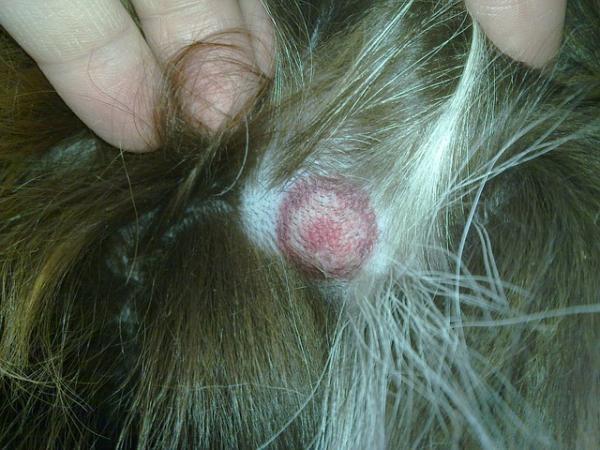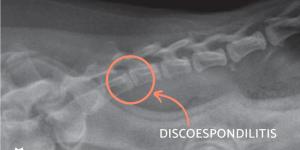Lyme Disease in Dogs



See files for Dogs
Do you own a dog? Do you let them roam fields and forests on your walks? Do these walks usually end up with the appearance of ticks? Be careful and protect them against these ectoparasites. Ticks can transmit many diseases, even before you manage to remove them.
One of the most recently discovered tick-transmitted diseases in dogs is Canine Borreliosis or Lyme disease. Read this new AnimalWised article to find out everything about Lyme disease in dogs, their symptoms and their treatment.
What is Canine Borreliosis?
This disease, also known as Lyme disease, is caused by a bacterium, specifically a spirochete called Borrelia burdogferi. It is transmitted by ticks of the genus Ixodes. This disease has been known since 1984.
Canine Borreliosis causes several health problems but, in principle, if it is diagnosed early and given appropriate antibiotics, the disease can be overcome. The clinical picture includes several health problems, but mainly associated with arthritis, deformation of the joints, carditis, nephritis and fever.

Symptoms of Lyme Disease in Dogs
Symptoms may take a few weeks or even months to appear. In this disease there are very broad symptoms and there may be dogs that do not show them all. It may be that only some isolated symptom appears, such as a limp. Other symptoms include:
- Recurrent lameness due to inflammation of the joints. Many times it lasts only a few days but after a few weeks it returns and so on. The lameness can either be in the same leg or change every time it occurs. Or sometimes, even both legs at once.
- Arthritis and deformation of the joints.
- Fever, lack of appetite and depression, which usually result from inflammation of the joints.
- Stiff, arched back.
- Sensitivity to touch, muscle and joint pain along with adynamia (muscle weakness with generalized fatigue that can cause absence of movement or reaction).
- In the area of the tick bite there may be inflammation and/or irritation accompanied by inflammation of the superficial lymph nodes around the area.
- Kidney problems that, if left untreated, can lead to nephritis or glomerulonephritis and end in kidney failure. This will generate more common symptoms such as vomiting, diarrhea, weight loss, lack of appetite, increased thirst and urination. As well as accumulation of fluid in the abdomen and tissue, especially under the skin and on the legs.
- Carditis or inflammation of the heart, although infrequently and occurs in severe cases.
- Complications in the central nervous system, although less frequent and in severe cases.

Diagnosis of Canine Borreliosis in Dogs
When we go to the vet because one or more of these symptoms have manifested in our dog, we must explain in detail many things. What we have observed, which activities you have done recently and where, and possible health problems of your dog (especially if a new vet). Always answer any questions they may have honestly and sincerely, the vet needs as much information as possible.
In addition to all the information, the veterinarian will need to test the dog to rule out or confirm possible causes of the symptoms. They will likely perform blood and urine tests.
If the veterinarian considers it appropriate, they will perform other tests for the diagnosis. For example, they may be interested in extracting fluid from the inflamed joints for analysis, ultrasound and x-rays, among many other useful tests. And, if you really want to help our faithful friend, do not hesitate to give permission for these tests to take place.
The prognosis of this disease is good if it is diagnosed and treated promptly, is reserved for chronic cases and is bad if the disease affects the heart, central nervous system or the kidneys, provided that it is not treat in time in the case of the kidneys.

Treatment of Lyme Disease in Dogs
The treatment for Canine Borreliosis will depend on the affected organs and body parts and how advanced the disease is. Firstly, antibiotics must be given, and at home we must make sure that our friend avoids strenuous activity and is always warm and dry.
Surely the antibiotics recommended by our trusted veterinarian will be accompanied by some pain medication, but we will never have to administer an analgesic drug to our dog. They will always be prescribed by the specialist veterinarian - both the type, the dose and time of administration. The specialist veterinarian should seek to avoid the administration and prescribing corticosteroids, since in this case there is a risk of the spread of Borrelia ( Borrelia burdogferi ).
Usually, with antibiotics, an improvement in acute inflammation of the joints is observed within a few days. Even so, the overall treatment should last at least a month. Although all this will depend on the severity of the disease.

Prevention of Lyme disease in dogs
The only prevention of Lyme disease in dogs is the prevention of ticks. Therefore, it is vital that we remember to apply the appropriate antiparasitics to our dog as advised by our veterinarian. Whether they be in the form of pipettes, necklaces, etc.
It is very important that, even if we have antiparasitic protection, every time we go to grassy fields, gardens or parks, etc., wherever there may be ticks, examine the entire body of your pet after a walk.
In case we find any, we must extract it with the utmost care and ensue that there is no part of the tick attached to the skin of our dog. To do this, we must inform ourselves as best as possible about how to do so with the minimum risks. It is essential that the ticks are removed the same day, because the longer they are in our pet the more likely they are to get lyme disease. Check out our AnimalWised article where we answer can a dog die from ticks?

This article is purely informative. AnimalWised does not have the authority to prescribe any veterinary treatment or create a diagnosis. We invite you to take your pet to the veterinarian if they are suffering from any condition or pain.
If you want to read similar articles to Lyme Disease in Dogs, we recommend you visit our Bacterial diseases category.











